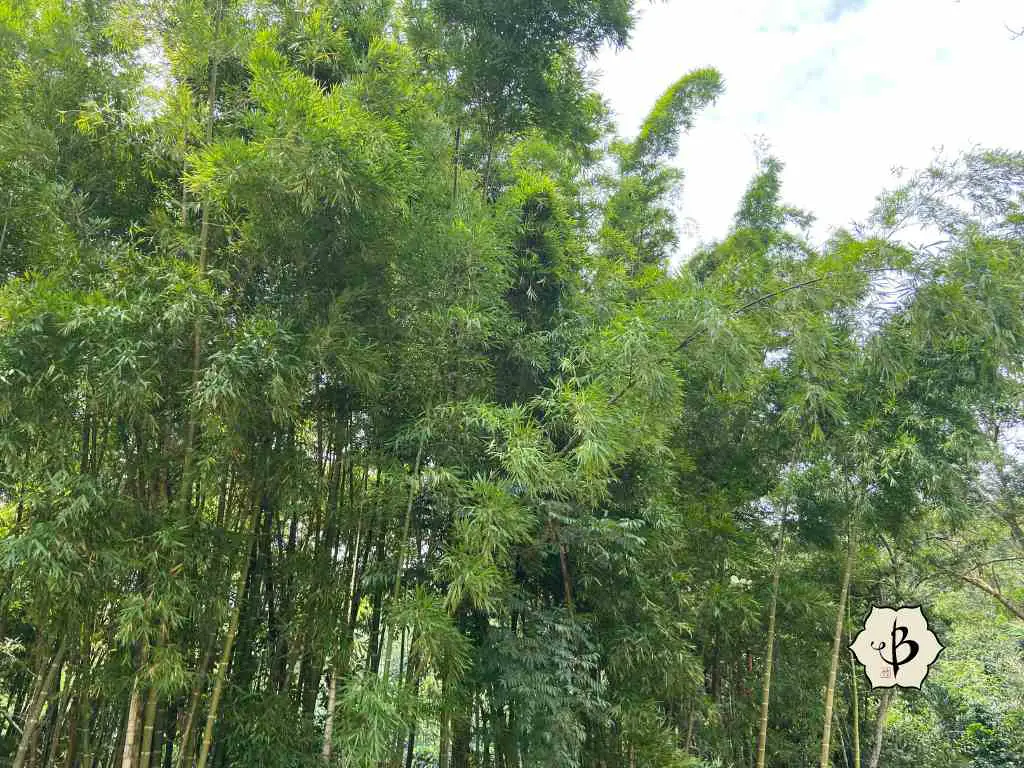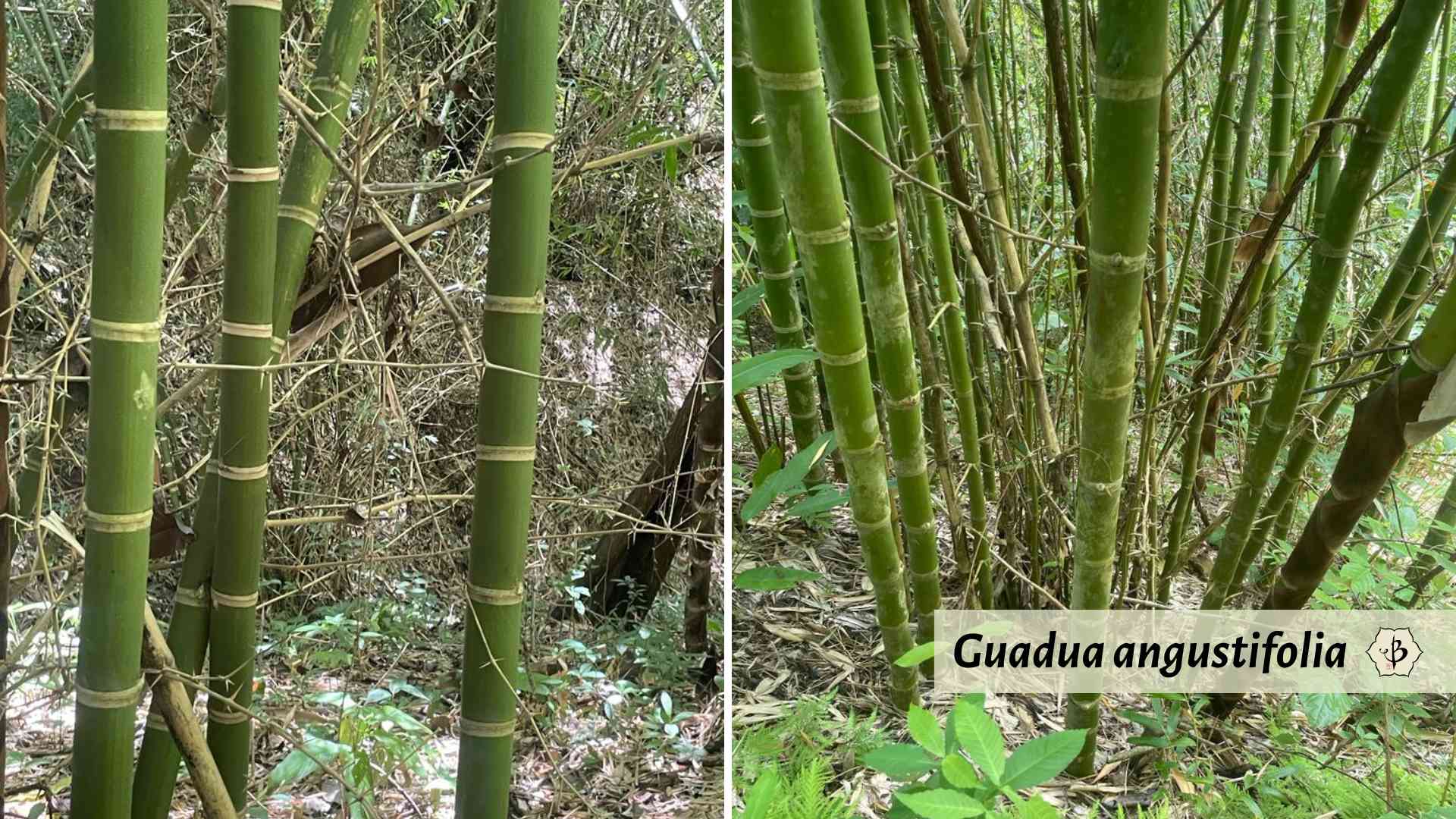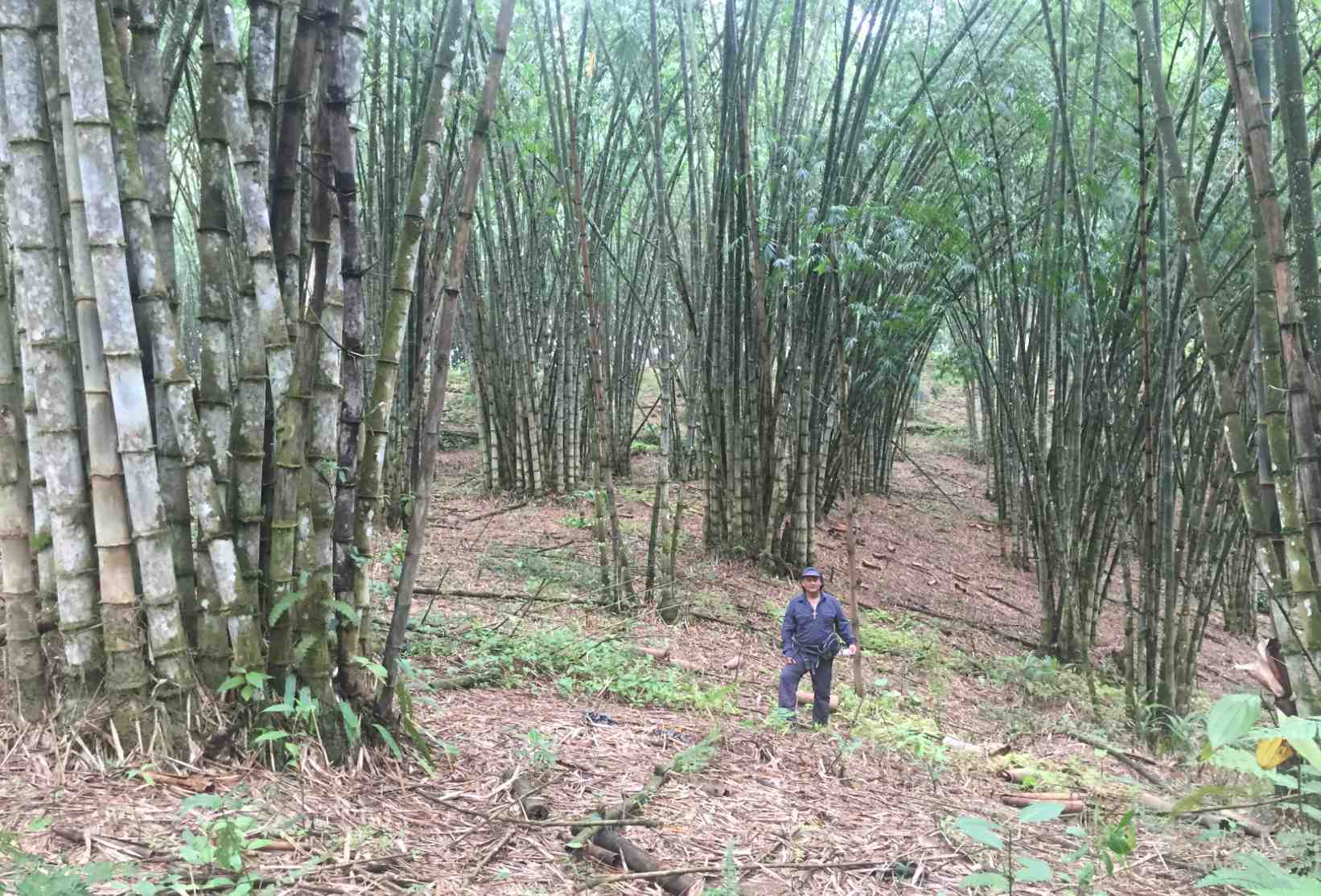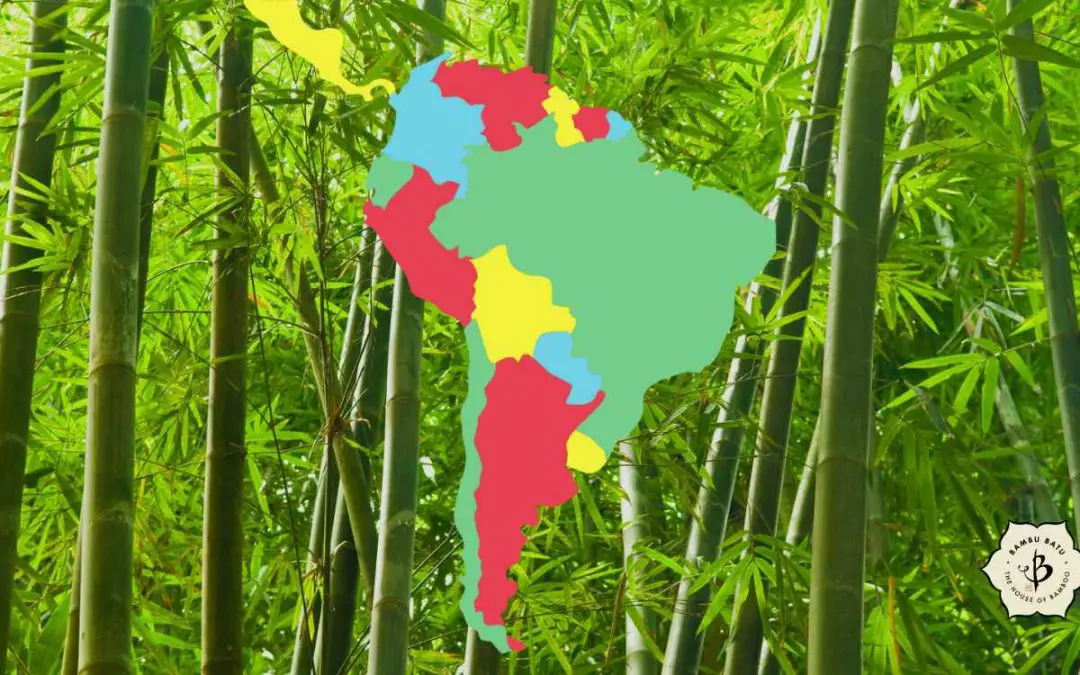Famously the home of coffee beans, cocoa, and a profusion of potatoes, South America also has its fair share of bamboo. In fact, anyone who believes that bamboo is only endemic to the Far East would be shocked to learn just how widespread it is in Latin America.
South America has the greatest diversity of bamboo outside of Asia. From the tropical jungles of the Amazon to the equatorial highlands of Colombia to the temperate forests of Chile, bamboo thrives throughout the continent. The bamboo from this part of the world comprises a tremendous diversity, but they are all clumping varieties, as opposed to runners. We generally refer to these New World species as neotropical. Guadua, a giant timber bamboo, is very important economically, while more modestly-sized species of Chusquea are quite popular as ornamentals. South America is also home to an exotic assortment of herbaceous and climbing bamboo.
NOTE: This article first appeared in April 2021, most recently updated in March 2024.
Bamboo diversity in Central and South America
The tropical and subtropical habitats that stretch from Mexico down to Chile provide some ideal conditions for a vast treasury of bamboo species. Apart from the arid Atacama Desert, the tundra of Patagonia or the high peaks of the Andes, you can find bamboo growing throughout most of the continent.
Although it’s one of the least populous continents in terms of humans, South America is just bristling with exotic plant life. And bamboo is one window into that world of biodiversity. Colombia is home to some of the world’s biggest timber bamboo, while the Amazon features some of the tiniest and most unusual species.
One of the only things you don’t find among South American bamboos are those running rhizomes that have earned bamboo its less favorable reputation as an invasive menace. Unlike the vigorously spreading Phyllostachys varieties that grow so well in the forests of China and the gardens of North America, South American bamboos are clumpers rather than runners.

Guadua: The queen of South American bamboo
The paragon of South American bamboo is undoubtedly Guadua angustifolia. This massive timber bamboo is native to the high-elevation forests of Colombia, where it enjoys an abundance of rain and sunshine. And due to its proximity to the equator, this habitat also offers a rare balance of darkness and daylight throughout the year.
Beyond Colombia, G. angustifolia also grows in Ecuador, Peru, Venezuela and northern Brazil. But it does not grow well in foreign habitats, in gardens of California for example. An additional 30 species of Guadua can also be found growing throughout the northern half of the continent all the way up to Mexico. But G. angustifolia remains by far the most important member of this genus.
Colombians proudly proclaim G. angustifolia to be the strongest bamboo species on earth. But Indonesians make the same claim about Dendrocalamus aster and others of that genus. In any case, it is certainly one of the world’s largest, strongest and most widely-used bamboo varieties for construction. Mature culms can easily exceed 100 feet in height and several inches in diameter. Thick culm walls provide superior structural integrity.

Local populations have long been familiar with Guadua bamboo and its great utility. Today they still use it for all manner of building and construction, but they also ship to the US and elsewhere overseas. This burgeoning export economy is encouraging Colombians to restore their forests by planting more and more acreage of bamboo.
This, in turn, is proving to be a boon both economically and ecologically. These Guadua forests can capture great quantities of atmospheric carbon. At the same time, the bamboo industry gives rural farmers an opportunity to grow something profitable besides cacao or coca.

Chusquea: Prolific bamboo of Chile
With close to 200 species, Chusquea is the most diverse genus of bamboo in South America. These prolific varieties grow all throughout Latin America, including the islands of the Caribbean. Unlike Guadua, these bamboos are much more modest in size. Some of the dwarf species are quite tiny, like the size of a pencil. The largest varieties are more like 30-40 feet tall.
Chusquea bamboos are less important than Guadua, in economic terms, but they are uniquely suited for crafts and construction. That’s because their culms are solid, or very nearly so, rather than being hollow like most bamboo. This makes the poles especially strong and resistant to splitting or cracking.

Furthermore, Chusquea bamboos are pretty adaptable to wide range of climates. Many species can do well in climates that range from 0º F to 100º F, meaning they can survive in many parts of the United States. They’re also more drought-tolerant than most bamboo species. Some of the more popular ornamental species include C. culeou and C. gigantea, both native to Chile.
Genus Aulonemia
Seldom celebrated but truly remarkable, this neotropical bamboo genus includes about 50 known species. Some of these bamboo varieties have exceptionally long internodes, and many of them are scandent (see below). Having softer wood than many other bamboo, Aulonemia species have long been used for weaving and other traditional crafts.
Genus Rhipidocladum
This is another exotic genus of bamboo, with just over a dozen species, all endemic to Mexico, Central America, and northernmost South America. The name Rhipidocladum means “fan-like branches”, and for this reason, these plants often look more like palms than bamboo. They can grow 30-50 feet tall, but with slender culms less than an inch thick.
Scandent or climbing bamboos of South America
Less well-known outside of their native habit are some of the unusual neotropical climbing bamboos. With more than 1,500 species in total, the classification of bamboo can get pretty interesting, and sometimes confusing.
Botanists divide the Bambusoideae subfamily into three tribes: Arundinarieae (woody, temperate, mostly runners), Bambuseae (woody, tropical, mostly clumpers), and Olyreae (tender, herbaceous, see below). So far, all the bamboos in this article have been woody tropicals. But the Bambuseae tribe also has an exotic sub-tribe called Arthrostylidiinae.
This rare division of bamboo includes about 15 genera. But you’re not going to find any of these in your local nursery. These are neotropical bamboos with a scandent or climbing growth habit. Many of these genera only have a few species. Some of the more diverse genera are Aulonemia (~50 species), Arthrostylidium (29 species), Merostachys (53 species) and Rhipidocladum (19 species). They grow and flourish in Central America, the West Indies, Mexico and South America.

Herbaceous bamboo of the Amazon
As mentioned above, there is a third tribe of bamboo called Olyreae, also known as herbaceous or non-woody bamboo. These bamboos are more closely related to Bambuseae, the tropical woody tribe, than they are to Arundinarieae, the temperate woody bamboos. But they really belong in a class of their own.
You can also find some herbaceous bamboo in Africa and New Guinea, but the overwhelming majority grow in the understory of the Amazon basin. These are small, shrubby bamboos that aren’t as useful as the woody bamboos, as far as making crafts and furniture.
Herbaceous bamboos are pretty unusual, and the average onlooker wouldn’t even recognize them as bamboo. Anyway, you have to trek well into the Amazon to find any Olyreae. So, in all likelihood, the average onlooker would never encounter these tender, little bamboos in the first place.

Bamboo in Mexico
Moving further north, Mexico has an impressive selection of its own bamboo. In addition to the wide variety of Guadua, Chusquea, Arthrostylidiinae and Olyreae, there are a few genera of bamboo that are strictly indigenous to Mexico.
To American gardeners, genus Otatea is the best-known variety from south of the border. Mexican Weeping Bamboo, as we call it, is an exquisite ornamental with many favorable characteristics. It has a compact growth habit, with slender, graceful foliage. It’s also relatively drought-tolerant and well-suited for a pot or container.
About five species of Olmeca bamboo grow in southern Mexico, mostly Chiapas, Oaxaca and Veracruz. This genus is especially interesting for two features. The plants produce an unusually large and fleshy fruit, about the size of a mango. But they are said to be flavorless, so you’re better off snacking on Opuntia fruit, i.e. prickly pear. Also, the roots, although clumping (sympodial) by nature, can grow remarkably long, up to several meters.
Is Mexico in South America?
No, it’s in North America. But for the purposes of this article, we’re also including Mexico and Central America as part of South America. That’s not for cultural or linguistic reasons, but for botanical reasons. Many of the South American bamboo genera have distributions that extend well into Mexico.
Mexico has a good assortment of its own indigenous bamboo varieties. But they have far more in common with the tropical bamboos to the south than those temperate species to the north. When we speak of tropical bamboo, this is often a synonym for clumping bamboo. And this category basically covers all the bamboo endemic to the regions south of the Rio Grande.
To the north, in the United States, there are actually about three native species of bamboo, belonging to the genus Arundinaria. These are temperate bamboos with running roots, more distantly related to the clumping strains of Latin America. So in terms of bamboo classification, it makes more sense to draw the dividing line along the US-Mexican border.

Further reading
If you found this article about bamboo of South America interesting and informative, you might also enjoy these posts about bamboo cultivation and distribution.

























